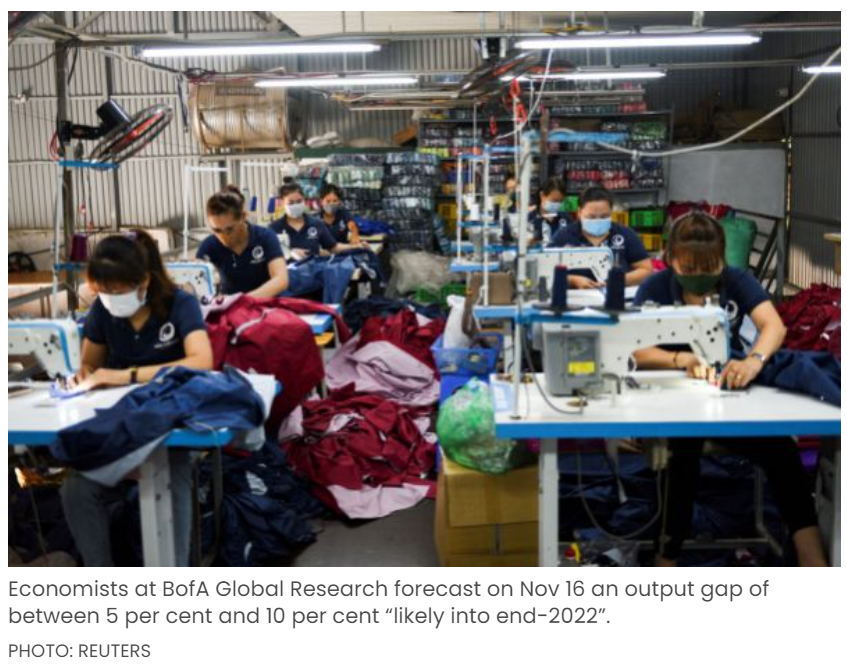Vietnam manufacturing activity to remain below potential into early 2022: report
MANUFACTURING in Vietnam could stay subdued into early 2022, amid a Covid-19 outbreak, migrant worker shortage, higher cost of materials, and port logjams.
Some production losses will also turn permanent, economists at BofA Global Research warned in a report on Tuesday (Nov 16), as they forecast an output gap of between 5 per cent and 10 per cent “likely into end-2022”.
The negative output gap – which represents the difference between the actual and potential level of economic activity – is also consistent with Vietnam’s economic outlook for 2022 and 2023, as analysts projected “a substantial gap to the pre-Delta trend path and an even larger one relative to the pre-Covid trend”, the report added.
To be sure, Vietnam is expected to stay a key beneficiary of supply-chain diversification out of China into South-east Asia – especially for consumer products that require more capital-intensive manufacturing, such as smartphones and home appliances.
“Vietnam’s role in global supply chains has grown as it has absorbed a significant portion of labour-intensive goods production from China and also some portion of the electronics supply chain,” the analysts wrote, adding that “we do not see the other economies in Asia fully replicating Vietnam’s role in the long run”.
Still, manufacturers could move to reduce their reliance on Vietnamese production, especially amid the production disruption of the Delta-variant outbreak, the report said.
It flagged a temporary return of manufacturing to China, as well as longer-term shifts to other Asean countries, such as Indonesia, the Philippines and Cambodia, where lower costs could boost production of labour-intensive goods such as clothes and shoes.
The BofA report noted that some global apparel brands and their suppliers have already indicated that their factories in Vietnam may rebound to maximum capacity by December, in time to meet year-end festive-season demand.
But it suggested that this projection may be “too optimistic”, as “it will get more difficult to close the final 10 per cent to 20 per cent of capacity gap if labour shortages persist”.
Besides low Covid-19 vaccination rates and uneven reopening across different parts of Vietnam, the BofA analysts also cited a possible labour crunch as migrant workers may delay a return to work until after the Chinese New Year holiday in early February 2022.
As a result of the lower production in Vietnam, United States shoppers could see clothing and footwear prices go up by about 5 per cent in the first half of 2022, adding about 0.17 percentage point to core inflation and shaving 0.1 point to 0.2 point off consumer spending, the report concluded.
Source: https://www.businesstimes.com.sg/asean-business/vietnam-manufacturing-activity-to-remain-below-potential-into-early-2022-report


 English
English




